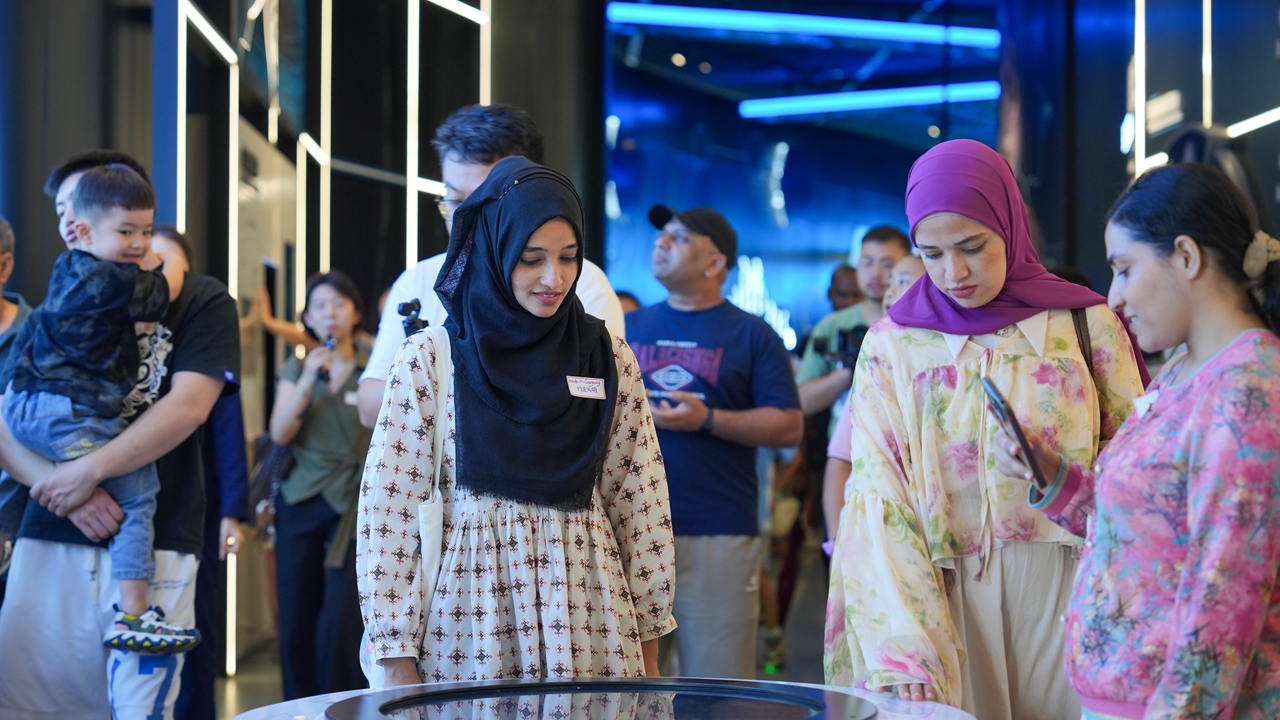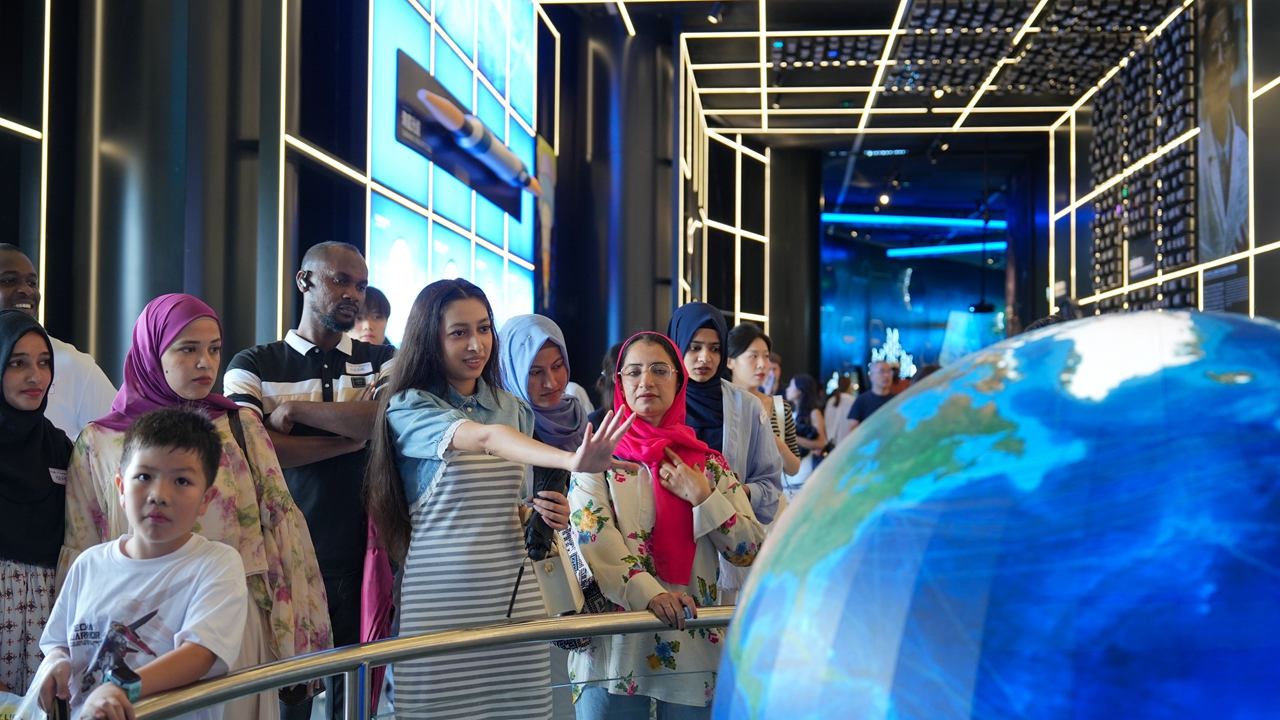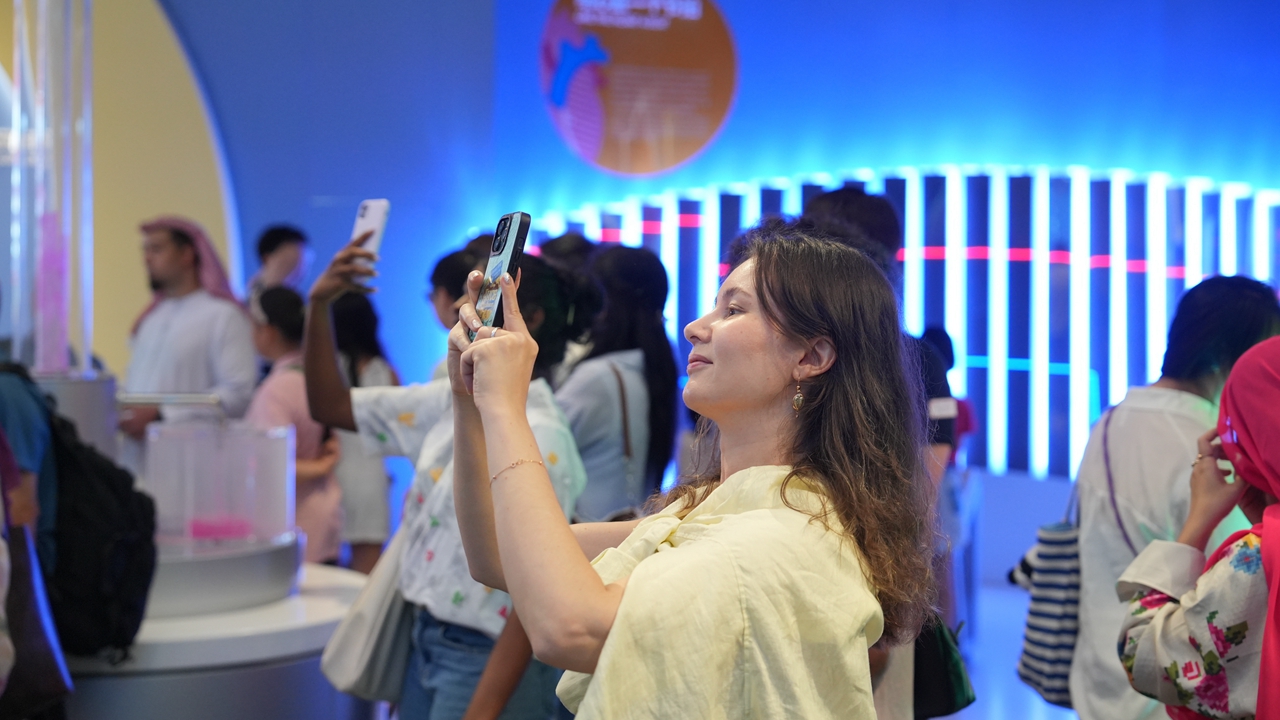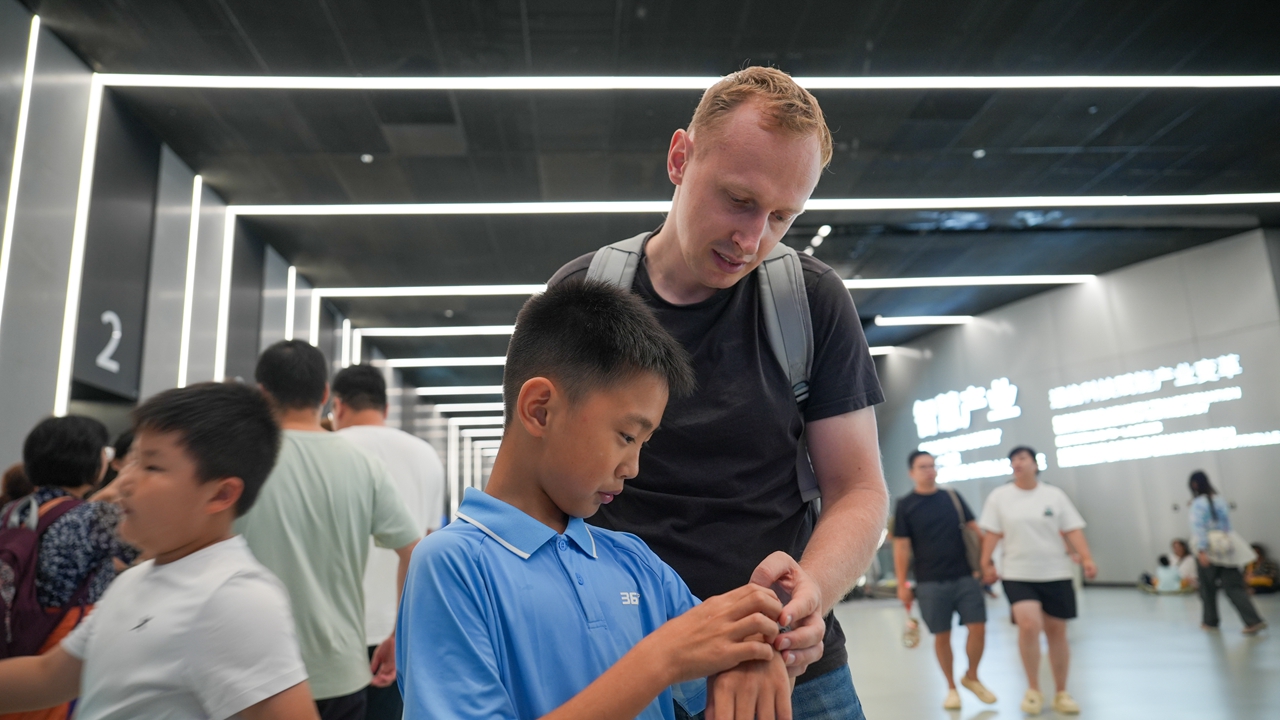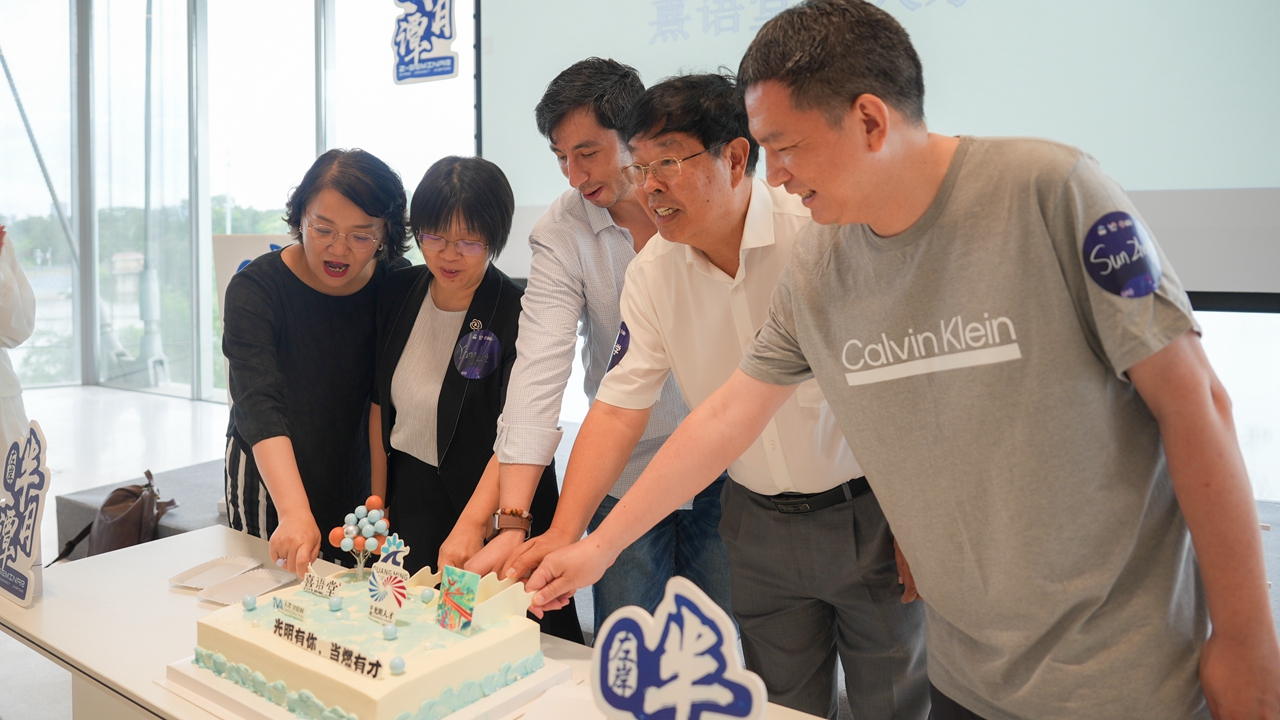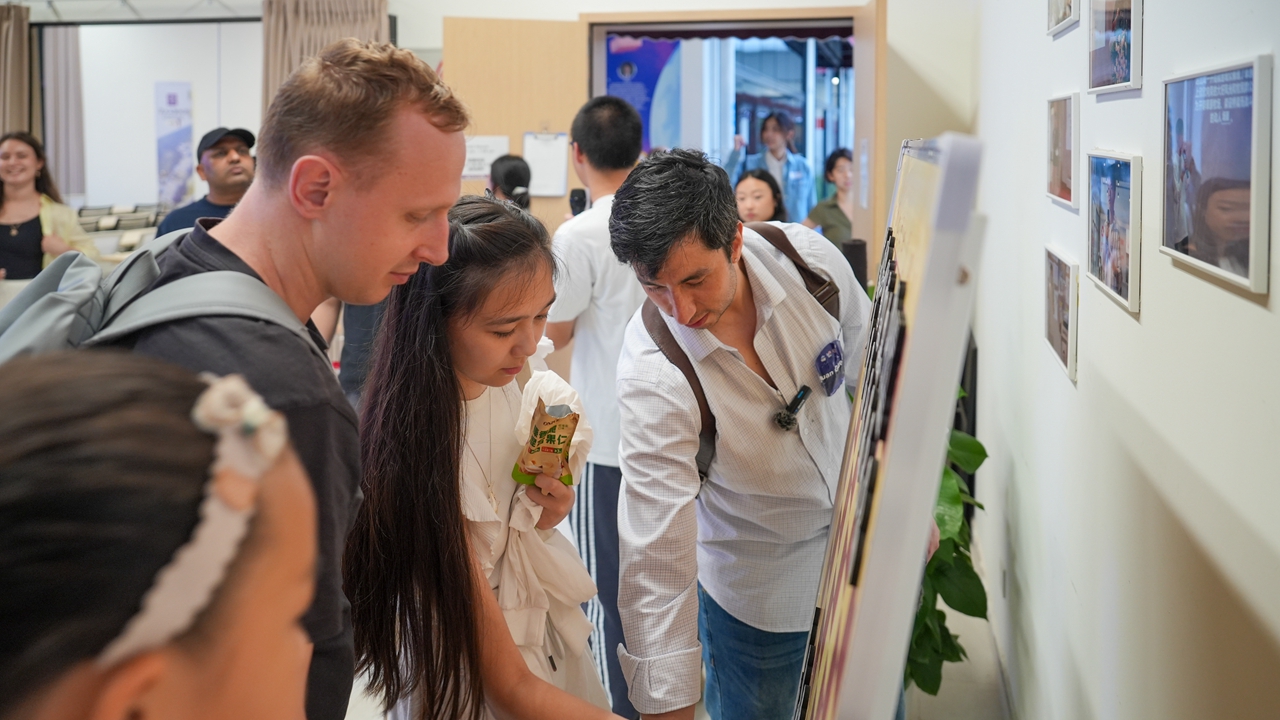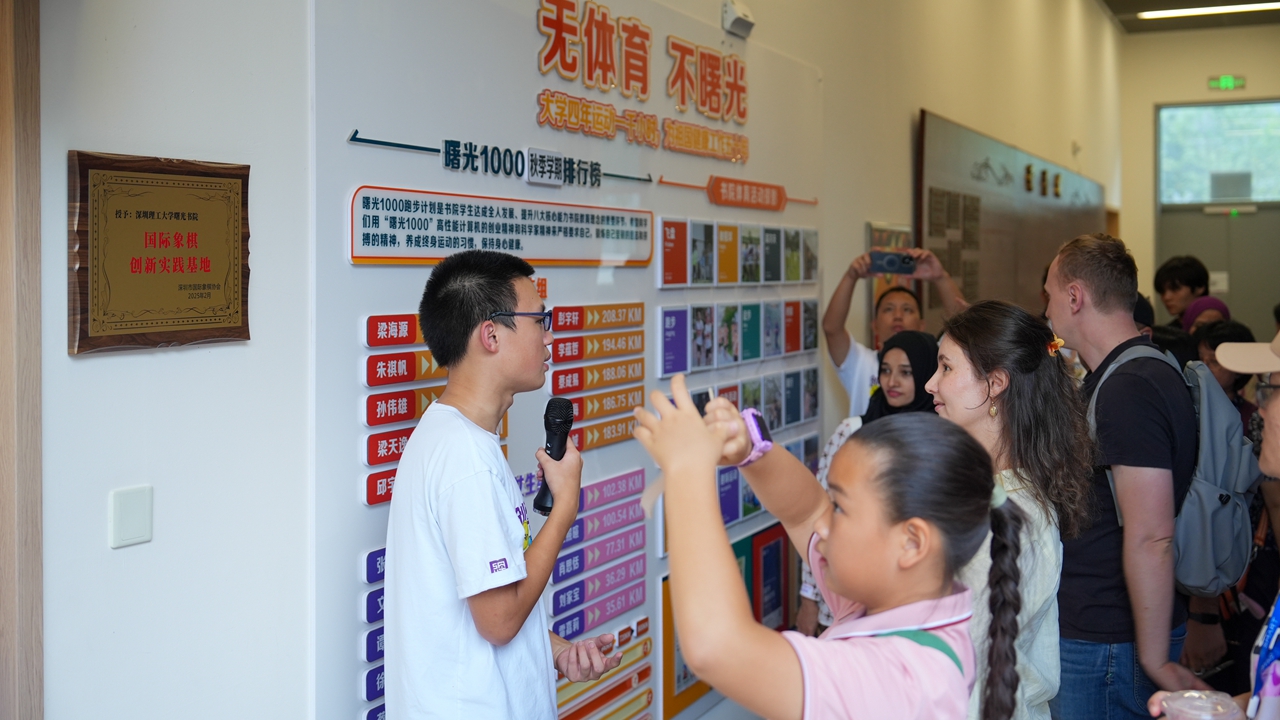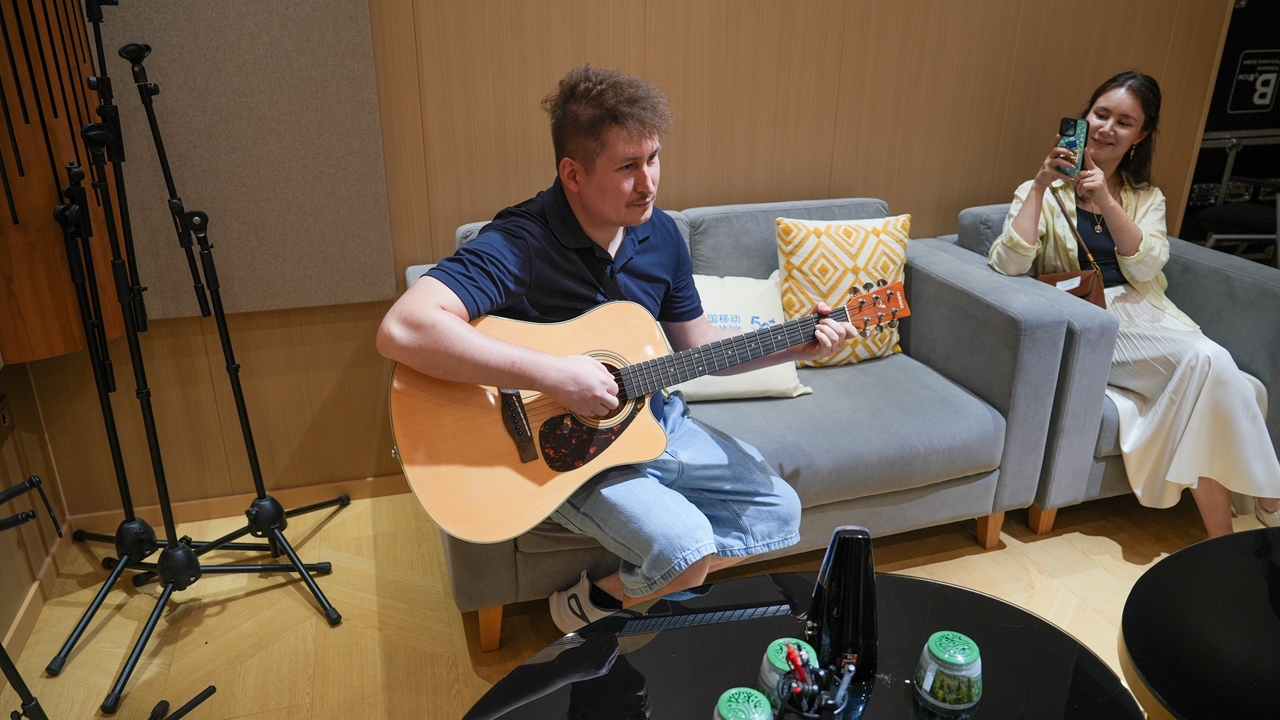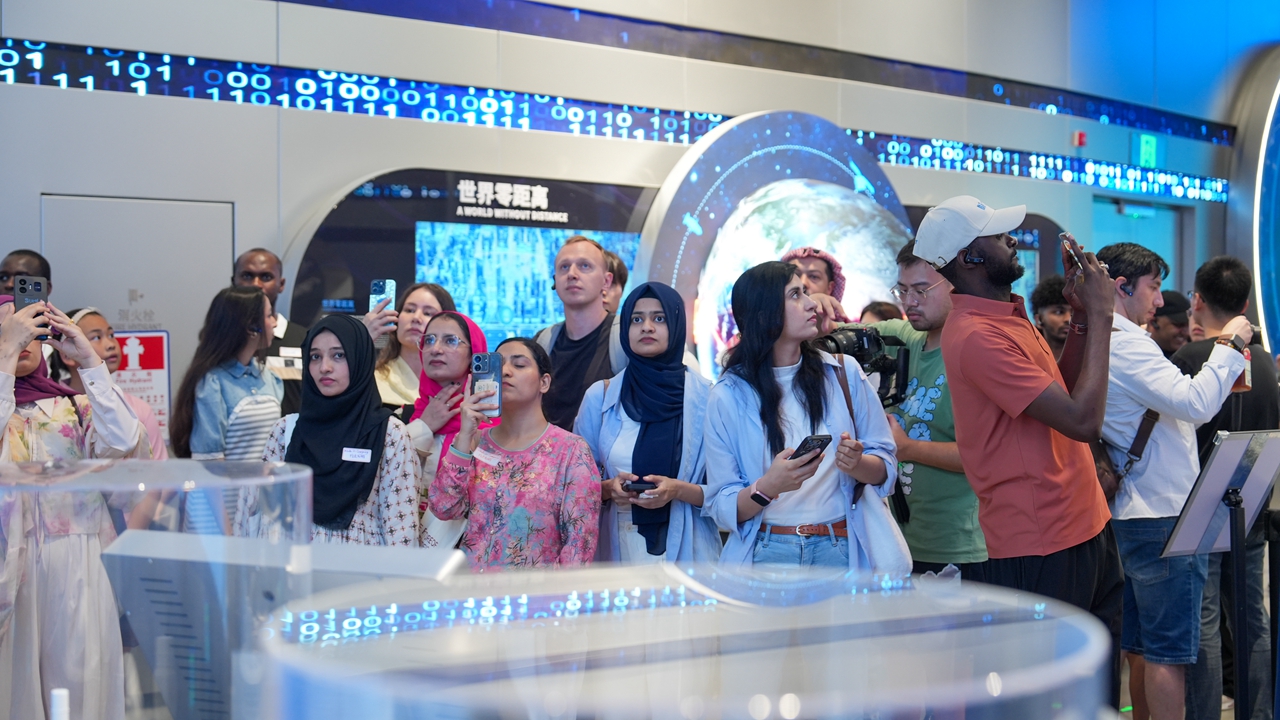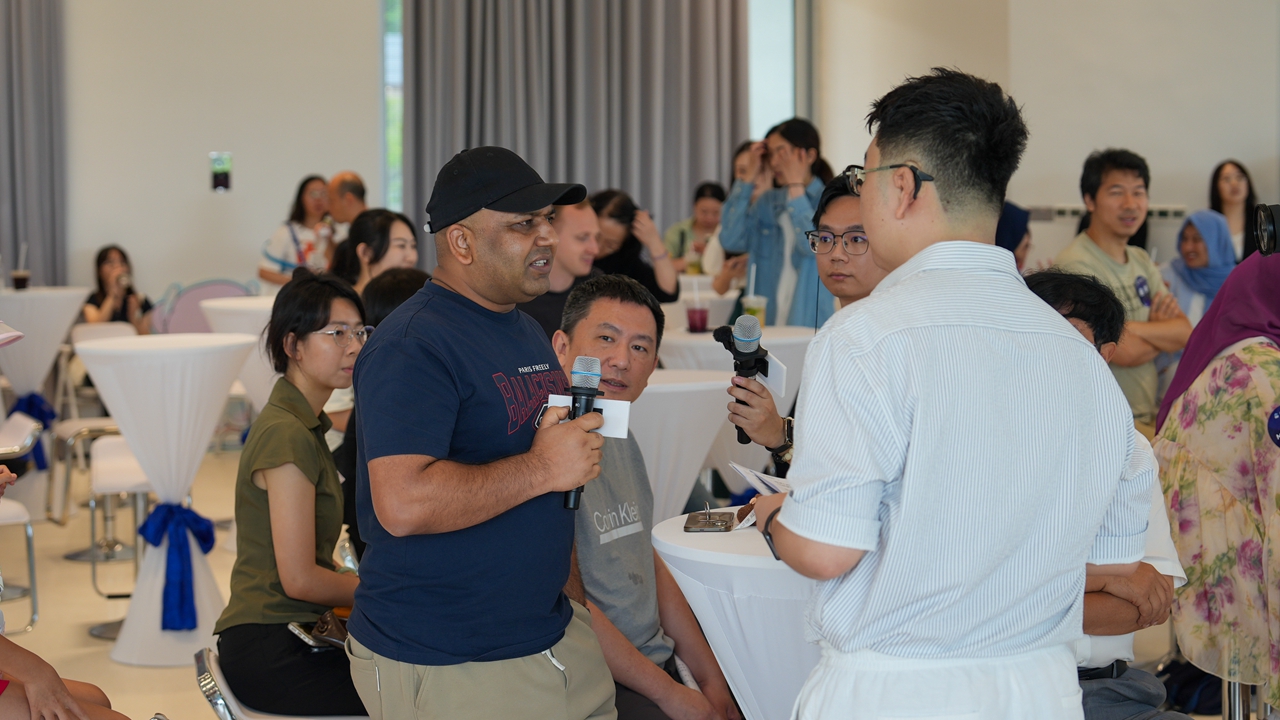Green,innovative,and futuristic: Gen Zers' vision for Guangming
Writer: Chen Siqi | Editor: Lin Qiuying | From: Original | Updated: 2025-07-01
Video and photos by Lin Jianping
An international group of over 30 expats, including students from the Z10 Club and foreign residents of Guangming District, embarked on a tour to explore the district’s innovations in science, biology, and education June 28.
Co-organized by EyeShenzhen, the Publicity Department of the CPC Guangming District Committee, Guangming District Foreign Affairs Bureau, and Guangming District High-Level Talent Service Center, the Guangming tour was part of the Z10 Club’s tour series. The group visited the Shenzhen Science & Technology Museum, Hongqiao Park and the Shenzhen University of Advanced Technology.
Participants pose for a selfie during their visit to the Shenzhen Science & Technology Museum in Guangming District on June 28.
Their first stop was the Shenzhen Science & Technology Museum, described by most participants as innovative, futuristic, and interactive. Led by a guide, the group explored diverse exhibition spaces blending science, art, and culture, engaging with cutting-edge tools and equipment for an immersive experience.
Centered on the theme “Digital Civilization · Innovation · Future,” the museum emphasizes communication technology and comprises seven major zones: Permanent Exhibition Area, Science Cinema Zone, Innovation Practice Zone, Science & Technology Exchange Zone, Public Service Zone, Business Management Zone, and Outdoor Science Zone.
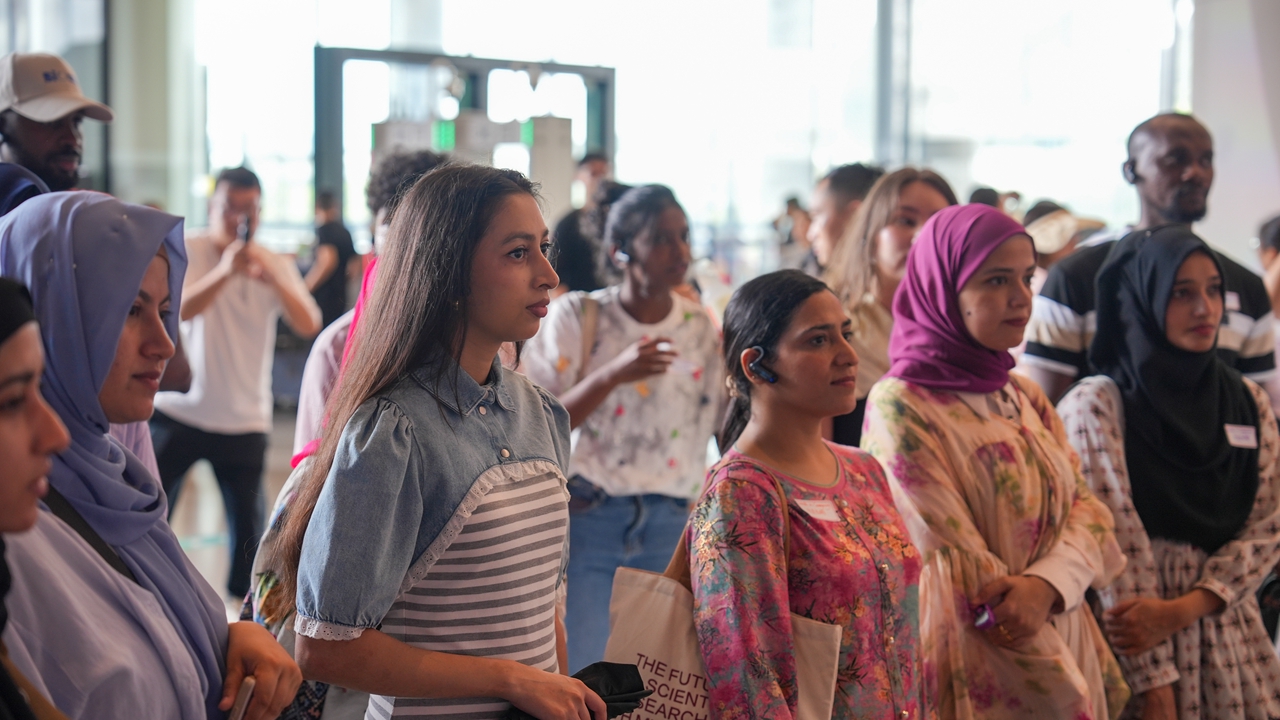
Expat visitors listen to a guide during their tour of the Shenzhen Science & Technology Museum in Guangming District on June 28.
The first floor’s Science Film Experience Zone traces the evolution of moving images through digital innovation, featuring 3D/4D and IMAX theaters alongside XR virtual filming.
“It felt like stepping into a futuristic world,” said Ranasinghe Janandi Oshadi Sri, a Sri Lankan student from Harbin Institute of Technology (Shenzhen), after interacting with a mind-controlled artificial flower device. “It’s just a road to the future,” she added.
The second floor’s “Hello, World!” exhibit introduces visitors to digital civilization, prompting reflection on humanity’s relationship with technology. On the third floor, the “Wonderful Life” hall showcases AI and humanoid robots revolutionizing daily life in transportation, communities, and homes. The fourth floor’s “Smart Industry” explores digital transformations in production, highlighting advances in materials, pharmaceuticals, logistics, and “lighthouse factories.” And the fifth floor’s “Origin of the Universe” delves into cosmic evolution, quantum science, and genetics.
“It was a pity that I didn’t bring my sons to this museum,” said Russian Maksim Silenko from Shenzhen MSU-BIT University. “It’s full of groundbreaking tech. And you can even touch and play with the machines.”
Jessica Theodora, an Indonesian student from Southern University of Science and Technology, described the museum as a place that can truly represent Shenzhen. “It has innovative, digital and advanced technology, and combined with real-life applications in health care, biology, and beyond.”
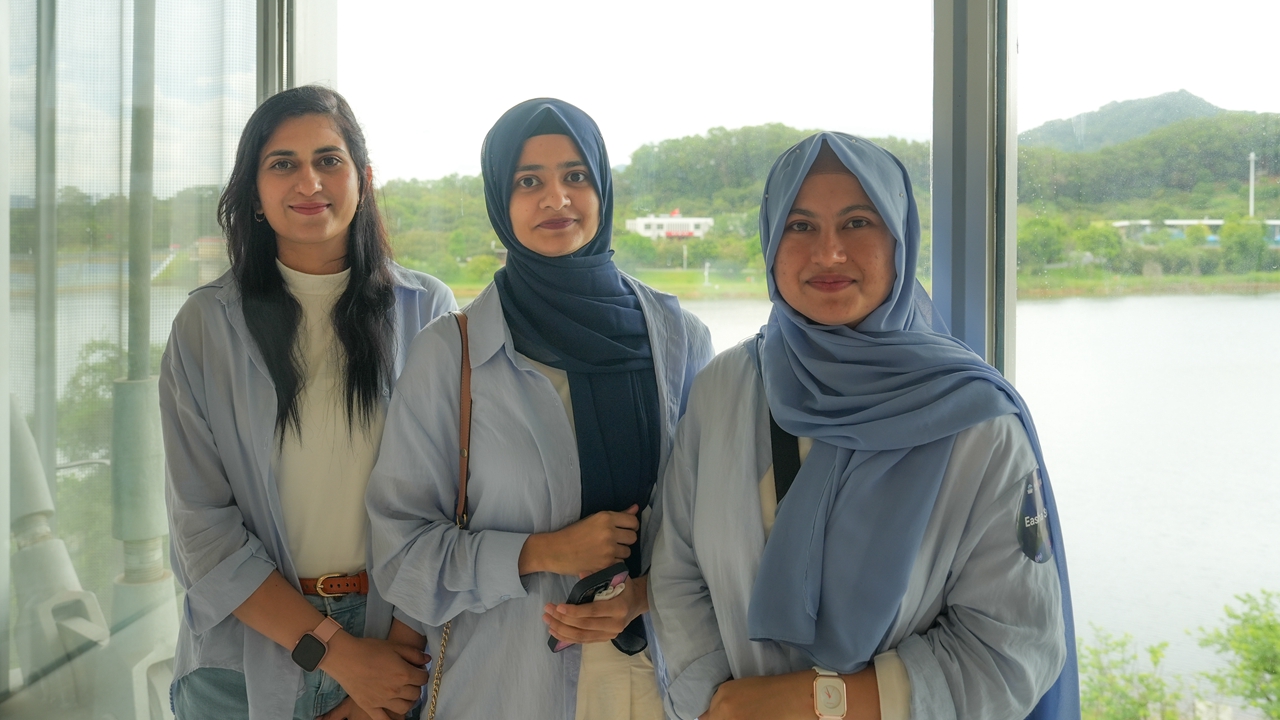
Visitors pose for a photo at the Sunshine Loft in Hongqiao Park.
After a refreshing downpour June 28, Hongqiao Park gleamed with renewed greenery under the afternoon sun. At the Sunshine Loft, expats admired the panoramic view of the park’s iconic red ribbon-like walkway, set against lush natural scenery.
The Science Bar International Talent Session was held to greet the expats at the Xiyu Hall in Sunshine Loft. The host kicked off the event with interactive games, prompting attendees to share their impressions of Guangming.
For some, this was their first introduction to the district; others had researched it but were visiting in person for the first time. A few were already living or working there.
“It’s so beautiful here, just look at all the greenery! I’d love to come back and spend a night,” said Maria Korepanova, a Russian student from Harbin Institute of Technology (Shenzhen). “It’s good to know this new place.”
Idrees Muhammad, a Pakistani student from Shenzhen University, had studied Guangming online before his visit. “Guangming is built for technology, with so many high-tech companies. It offers great opportunities for foreigners to explore and even settle down,” he said. “Seeing it in person, I’m impressed by the landscapes, greenery. And its road infrastructure is very good.”
Later, they were guided to tour around Hongqiao Park, where the group had a glimpse of its sports facilities and scenic trails.
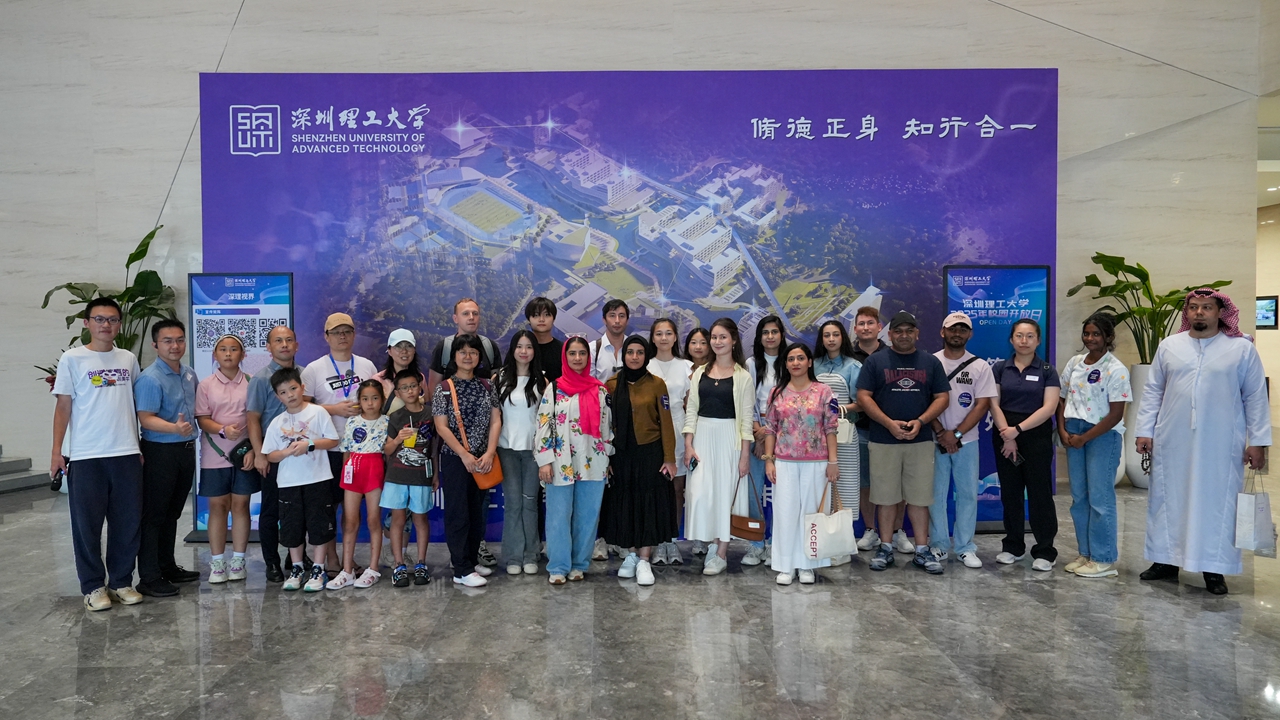
Visitors pose for a group photo at the Shenzhen University of Advanced Technology on June 28.
At the final stop, the group arrived at the Shenzhen University of Advanced Technology (SUAT), a newly established institution in its inaugural year. The group explored its potential as a hub for fundamental and cutting-edge scientific research.
Guided by 16-year-old freshman Li Zhicheng, attendees learned about the university’s academic structure, including its enrollment process, departments, educational philosophy, faculty, research achievements, and campus life.
The university has initially established seven interdisciplinary colleges: Faculty of Life and Health Sciences, Faculty of Synthetic Biology, Faculty of Computer Science and Control Engineering, Faculty of Biomedical Engineering,
Faculty of Materials Science and Energy Engineering, Faculty of Pharmaceutical Sciences and Faculty of Computility Microelectronics.
The university has assembled a high-level faculty team primarily composed of overseas high-level talents. This team includes 14 academicians from both domestic and international academies, 88 national-level talented professionals, with 42 professors having obtained permanent positions overseas and three foreign experts being selected for the Chinese Government’s Friendship Award.
For Juan Guerra, an Ecuadorian Ph.D. candidate at Harbin Institute of Technology (Shenzhen), the visit to the university was highly anticipated. As a Ph.D. candidate, he tracks universities and breakthrough papers worldwide.
“Discovering that the Chinese Academy of Sciences — the world’s leading research institution — has a Shenzhen branch was amazing,” said Guerra.
“The university had professors with their team having many publications in Nature, Cell, and Science. The level of research here is top-level. They just compete with German, America. This campus is bigger and more advanced than many European campuses with more years,” added Guerra.
Guerra will introduce the university on his social media channels, calling it a prime destination for those seeking world-class education.
More photos:
